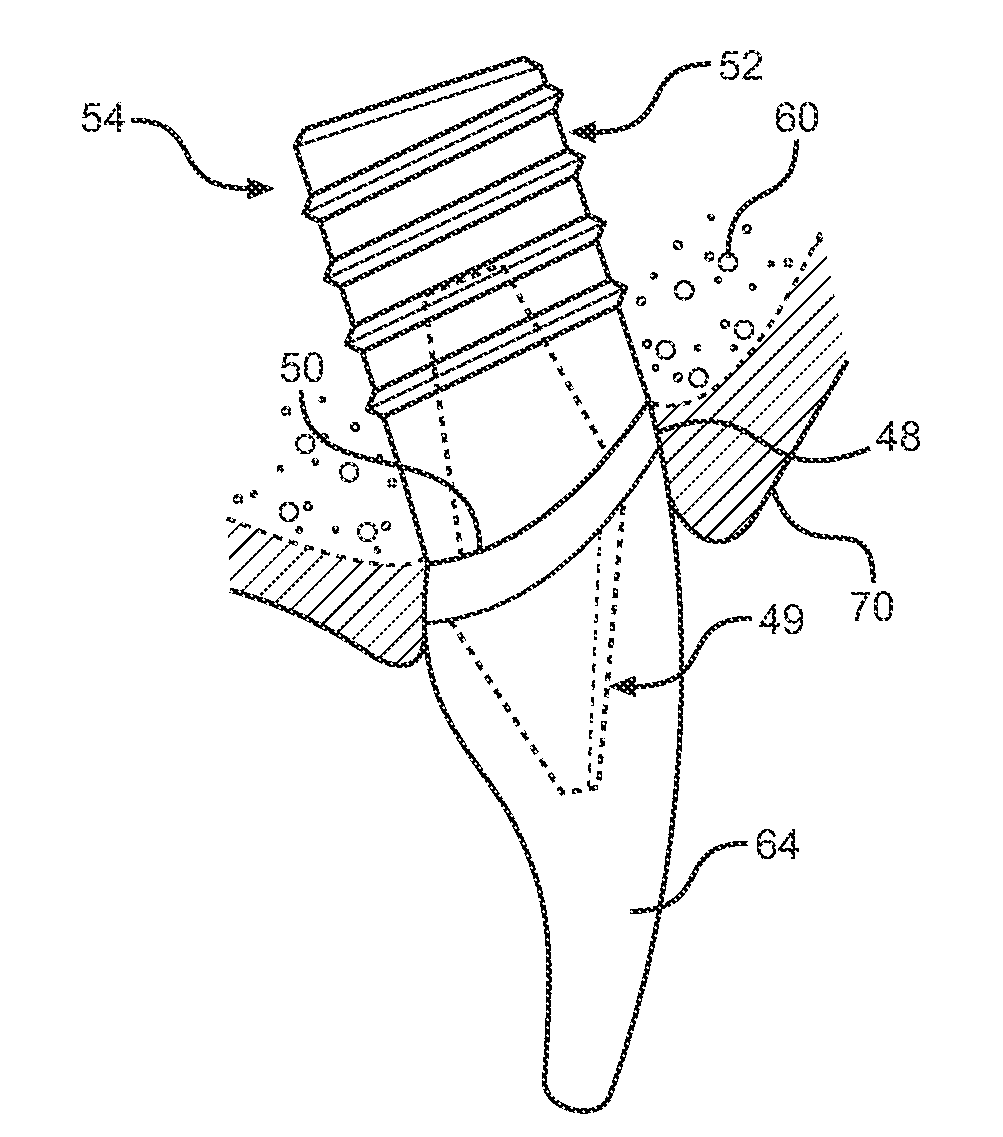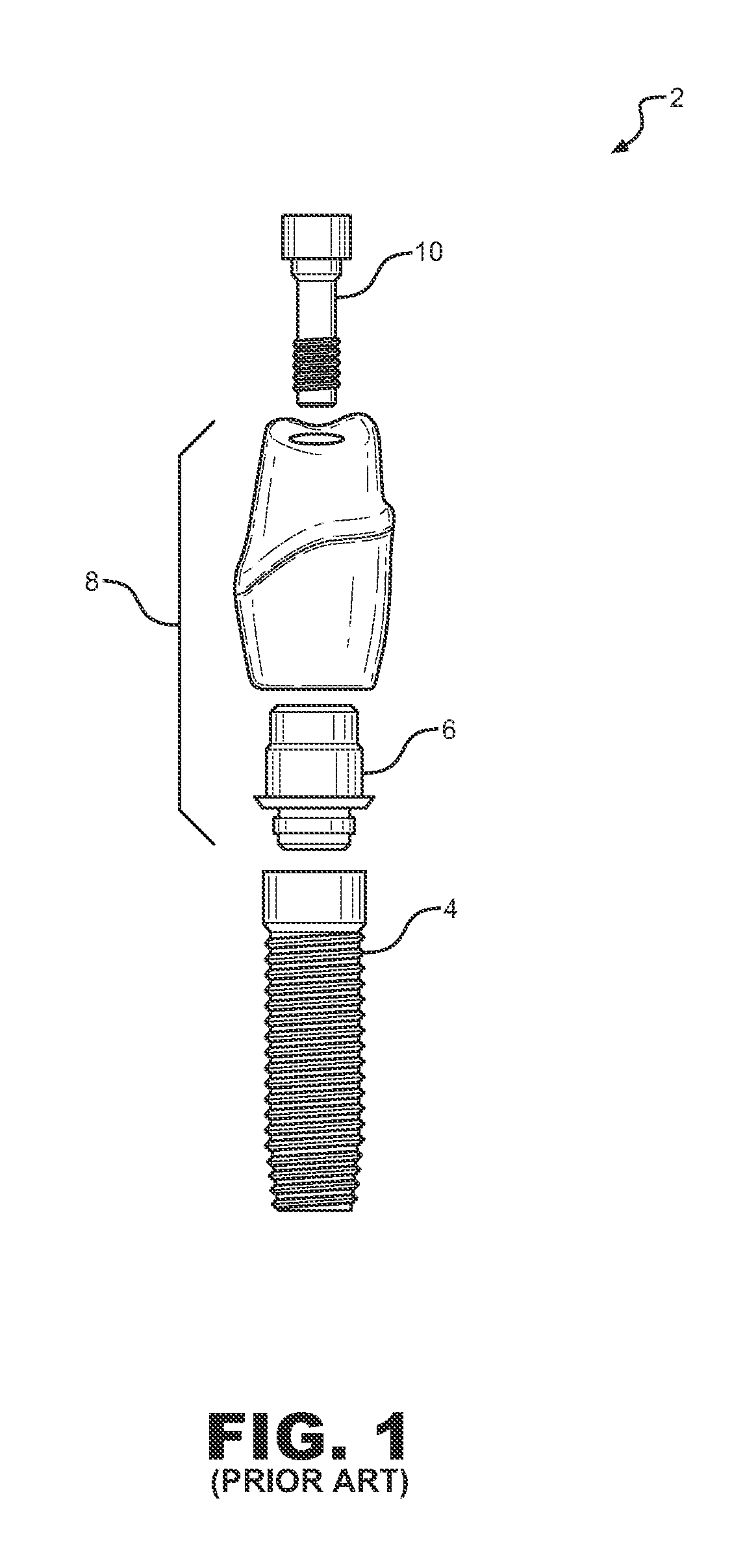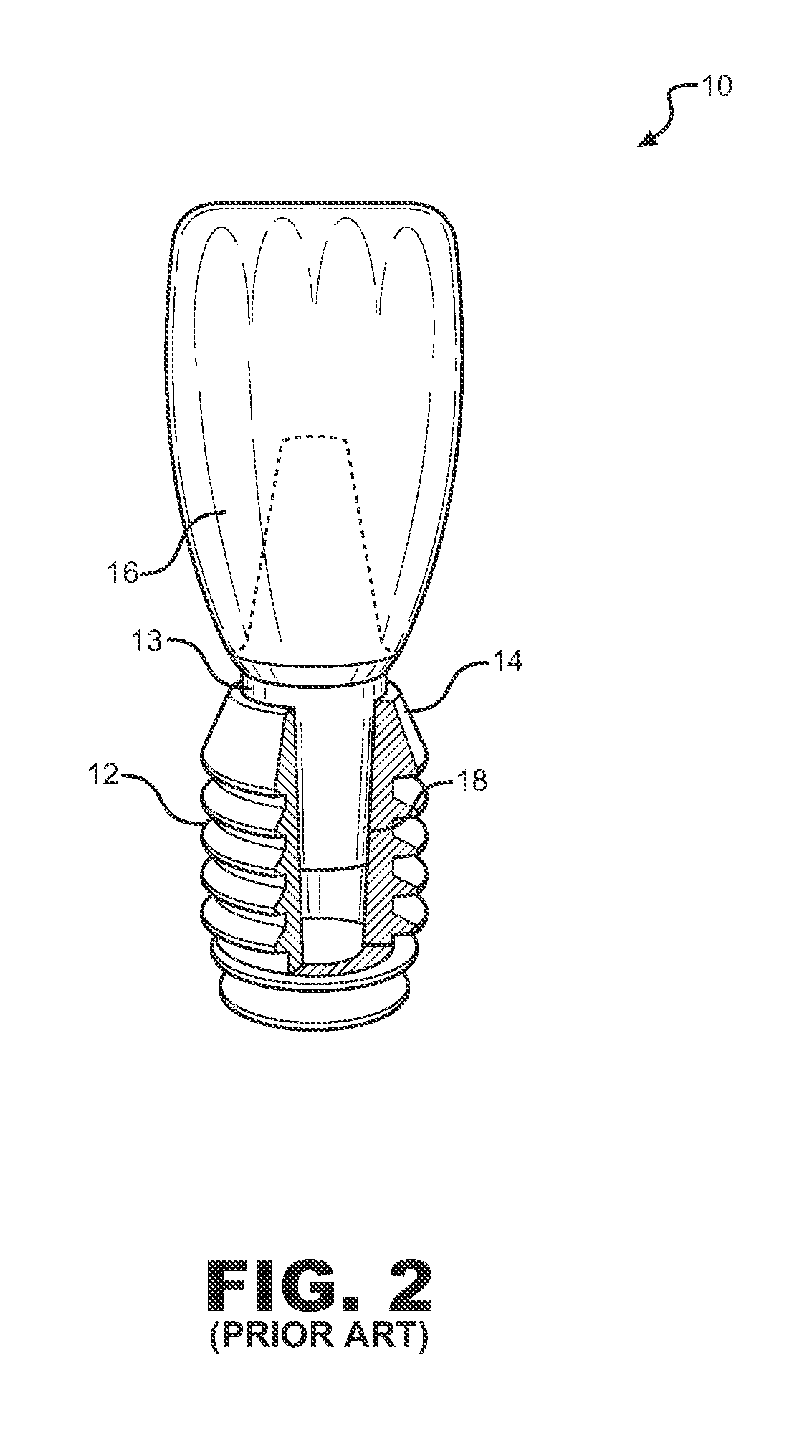Dental Implant System and Method of Use
- Summary
- Abstract
- Description
- Claims
- Application Information
AI Technical Summary
Benefits of technology
Problems solved by technology
Method used
Image
Examples
Embodiment Construction
[0051]Detailed descriptions of embodiments of the invention are provided herein. It is to be understood, however, that the present invention may be embodied in various forms. Therefore, the specific details disclosed herein are not to be interpreted as limiting, but rather as a representative basis for teaching one skilled in the art how to employ the present invention in virtually any detailed system, structure, or manner.
[0052]Referring first to FIG. 3, an implant system according to the principles of the invention includes an implant 20 and an abutment 22. Both implant 20 and abutment 22 are made from a millable ceramic such as zirconia. “Made from a millable ceramic” is meant to describe a product made from a pure form of the millable ceramic (for example, from pure zirconia) or from a composition containing the millable ceramic. For the sake of brevity, the embodiments described hereinafter will be disclosed using zirconia as the millable ceramic. Zirconia implant systems offer...
PUM
 Login to View More
Login to View More Abstract
Description
Claims
Application Information
 Login to View More
Login to View More - R&D
- Intellectual Property
- Life Sciences
- Materials
- Tech Scout
- Unparalleled Data Quality
- Higher Quality Content
- 60% Fewer Hallucinations
Browse by: Latest US Patents, China's latest patents, Technical Efficacy Thesaurus, Application Domain, Technology Topic, Popular Technical Reports.
© 2025 PatSnap. All rights reserved.Legal|Privacy policy|Modern Slavery Act Transparency Statement|Sitemap|About US| Contact US: help@patsnap.com



